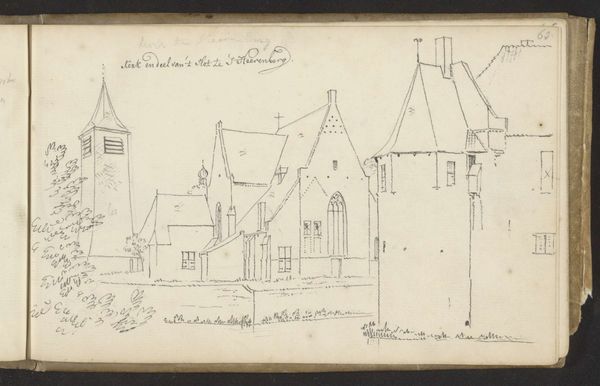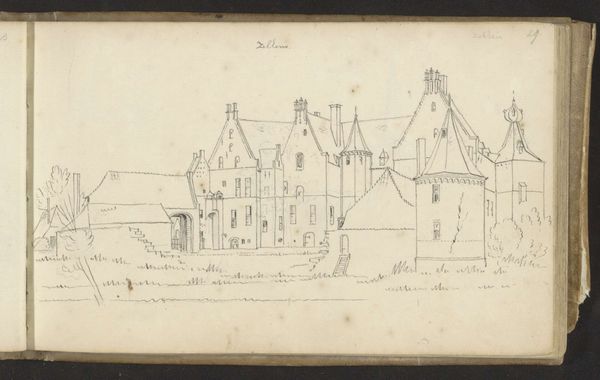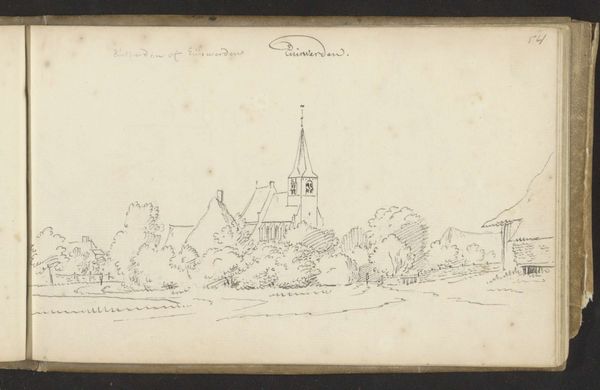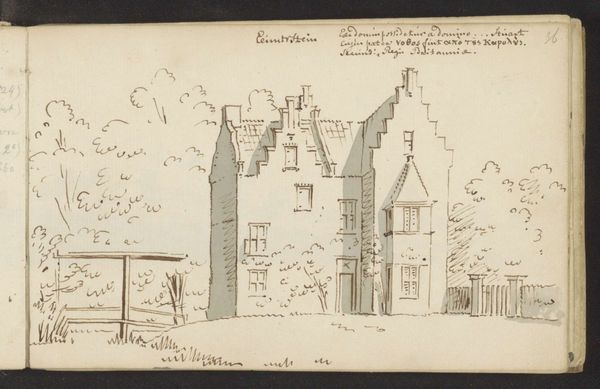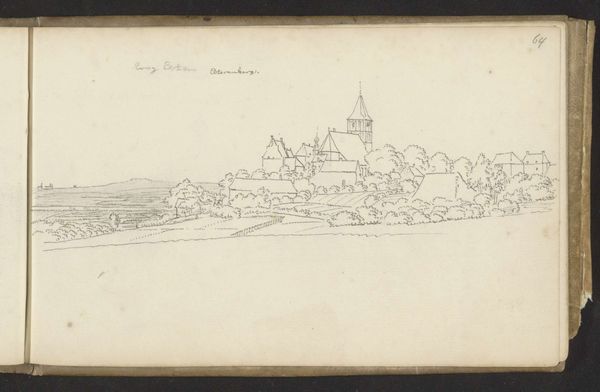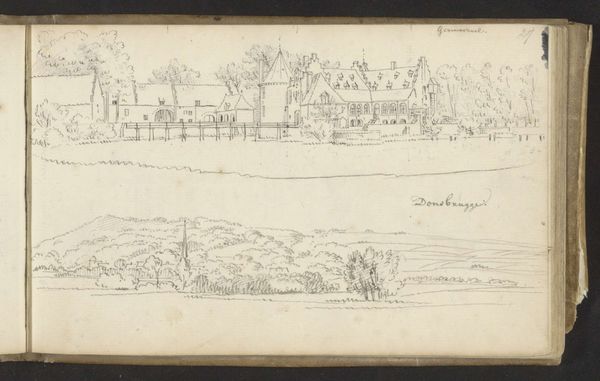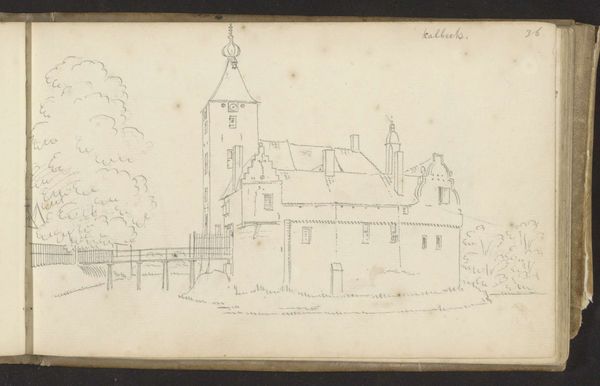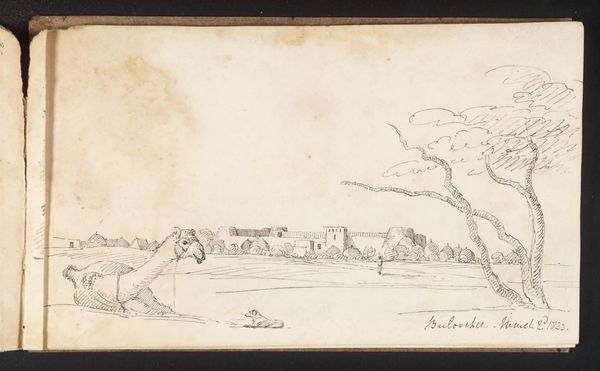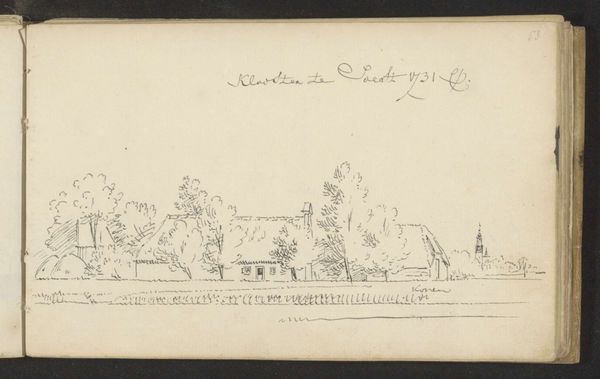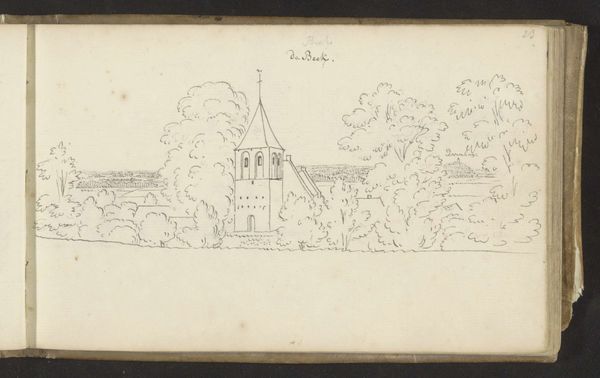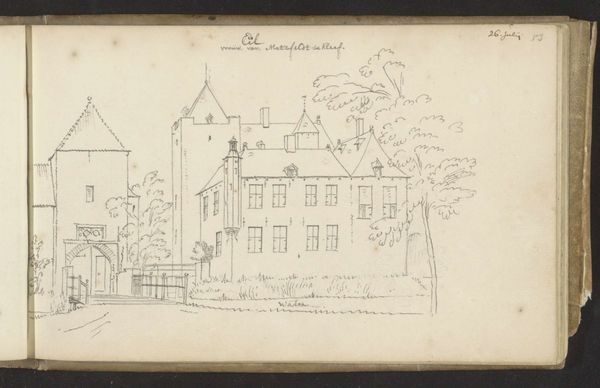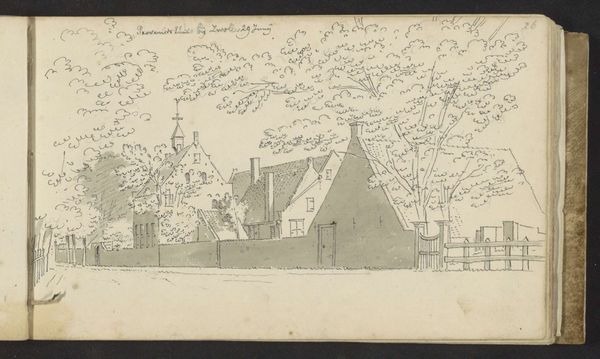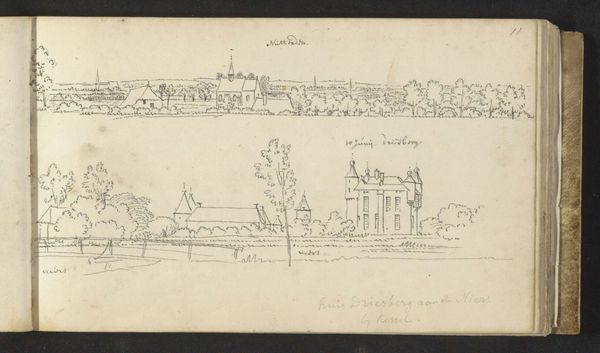
drawing, plein-air, ink, pen
#
drawing
#
quirky sketch
#
dutch-golden-age
#
pen sketch
#
plein-air
#
sketch book
#
landscape
#
personal sketchbook
#
ink
#
ink drawing experimentation
#
pen-ink sketch
#
pen work
#
sketchbook drawing
#
pen
#
cityscape
#
storyboard and sketchbook work
#
sketchbook art
Copyright: Rijks Museum: Open Domain
This pen drawing depicts Huis te Persingen, made by Abraham de Haen the Younger in the 18th century. At the forefront is the ruinous structure of the Huis, or house, while the background depicts a vast landscape. Ruins, like the Huis pictured here, are more than just physical remains. They represent the passage of time, the impermanence of human creations, and the inevitable decay of even the most imposing structures. In the collective psyche, ruins evoke a sense of nostalgia, loss, and the contemplation of mortality. Think back to the Roman ruins, or the crumbling temples of ancient Greece; these images remind us of the cyclical nature of history, the rise and fall of civilizations, and the continuous process of creation, destruction, and renewal. The emotional power of ruins lies in their ability to connect us to the past and to provoke a sense of melancholy and reflection. They remind us that what stands today will eventually crumble, and that everything is subject to the relentless march of time.
Comments
No comments
Be the first to comment and join the conversation on the ultimate creative platform.
